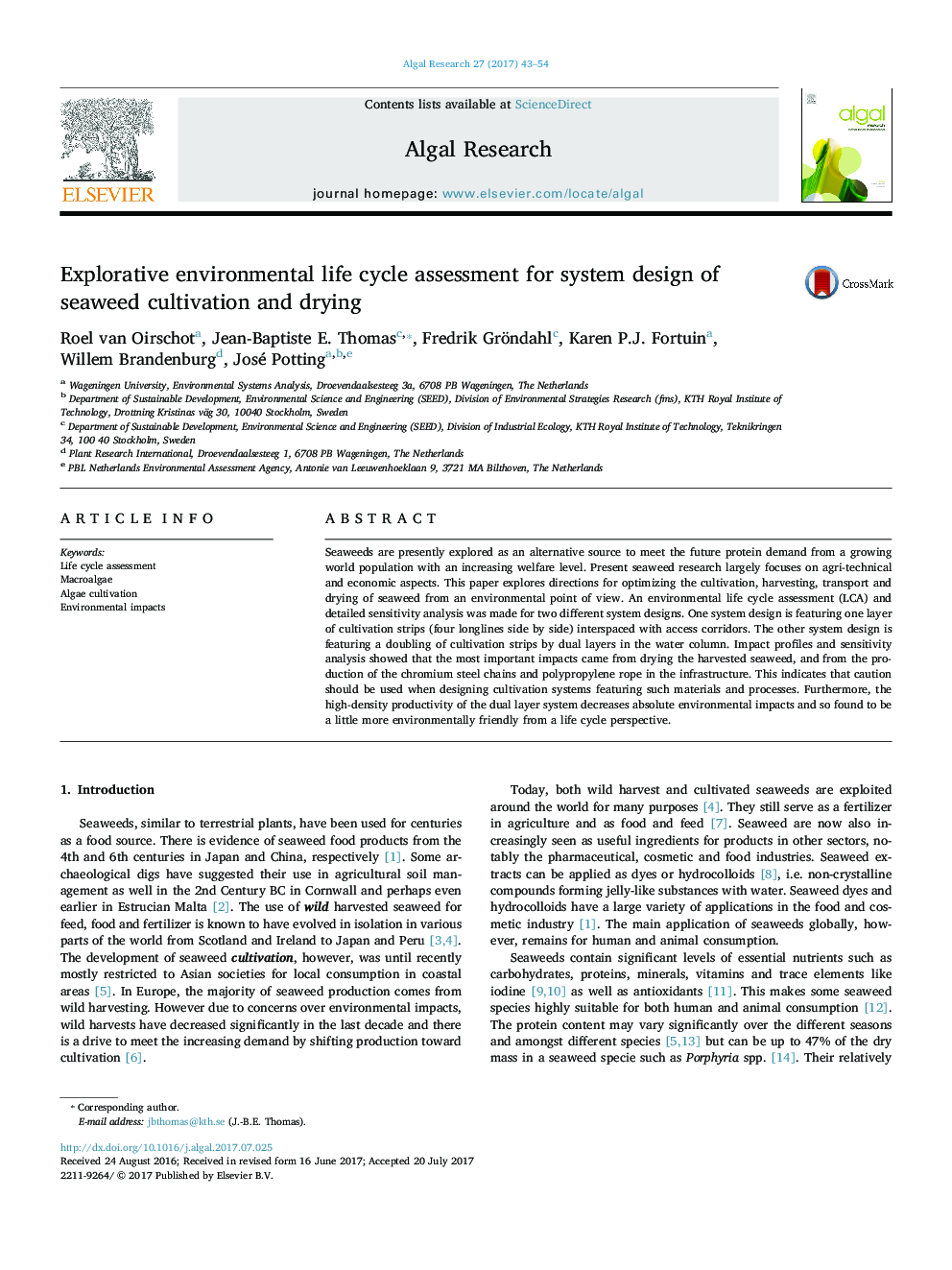| Article ID | Journal | Published Year | Pages | File Type |
|---|---|---|---|---|
| 5478561 | Algal Research | 2017 | 12 Pages |
Abstract
Seaweeds are presently explored as an alternative source to meet the future protein demand from a growing world population with an increasing welfare level. Present seaweed research largely focuses on agri-technical and economic aspects. This paper explores directions for optimizing the cultivation, harvesting, transport and drying of seaweed from an environmental point of view. An environmental life cycle assessment (LCA) and detailed sensitivity analysis was made for two different system designs. One system design is featuring one layer of cultivation strips (four longlines side by side) interspaced with access corridors. The other system design is featuring a doubling of cultivation strips by dual layers in the water column. Impact profiles and sensitivity analysis showed that the most important impacts came from drying the harvested seaweed, and from the production of the chromium steel chains and polypropylene rope in the infrastructure. This indicates that caution should be used when designing cultivation systems featuring such materials and processes. Furthermore, the high-density productivity of the dual layer system decreases absolute environmental impacts and so found to be a little more environmentally friendly from a life cycle perspective.
Related Topics
Physical Sciences and Engineering
Energy
Renewable Energy, Sustainability and the Environment
Authors
Roel van Oirschot, Jean-Baptiste E. Thomas, Fredrik Gröndahl, Karen P.J. Fortuin, Willem Brandenburg, José Potting,
